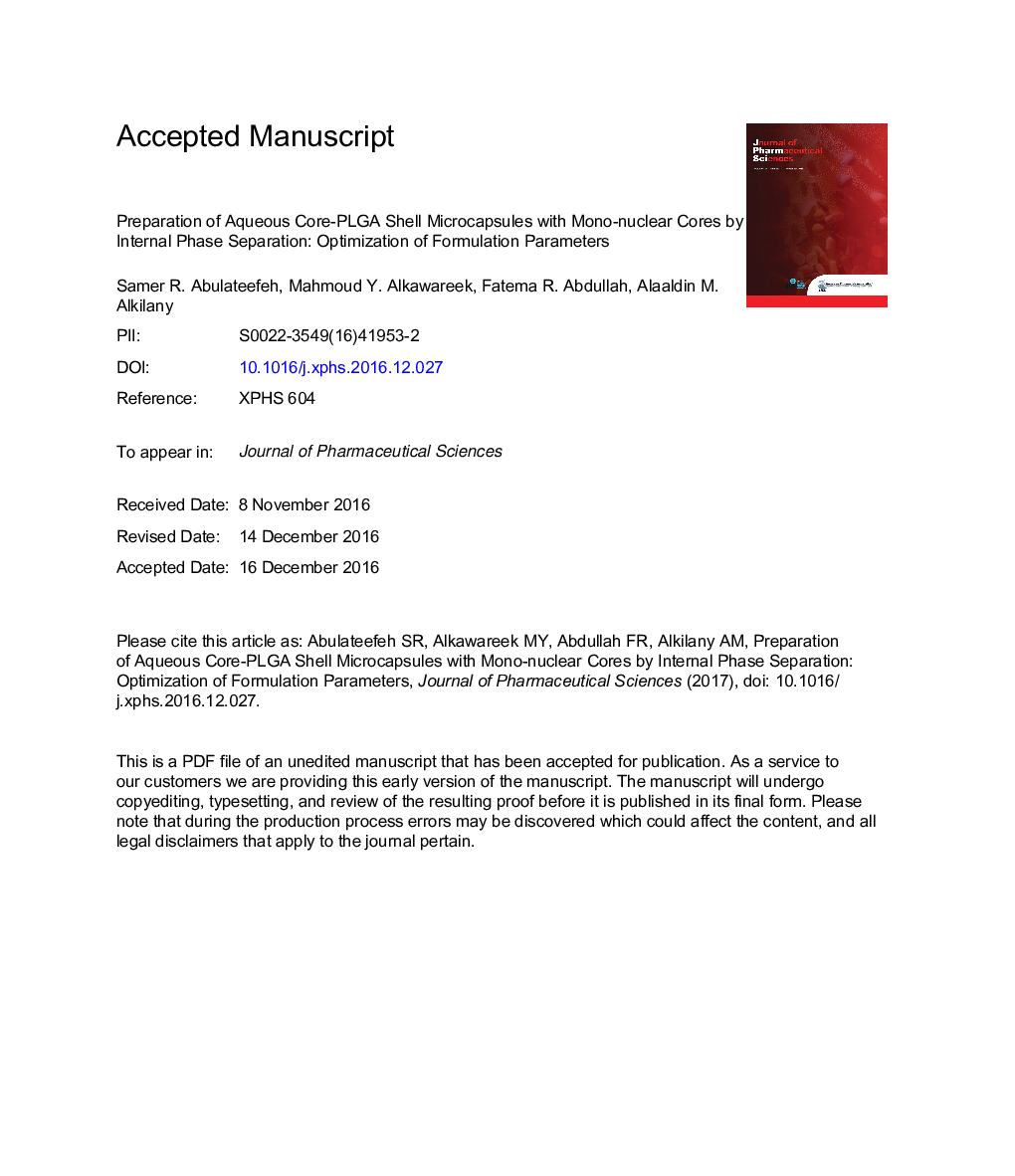| Article ID | Journal | Published Year | Pages | File Type |
|---|---|---|---|---|
| 8514348 | Journal of Pharmaceutical Sciences | 2017 | 30 Pages |
Abstract
Previously, our group employed the internal phase separation method to produce aqueous core-PLGA [poly(d,l-lactide-co-glycolide)] shell microcapsules with polynuclear core morphologies. This report describes the preparation of the more desired and challenging architecture with mononuclear cores. Optimization of formulation parameters including (1) varying the composition of the internal phase and (2) incorporating selected organic solvents (dichloromethane, chloroform, methanol, and acetonitrile) into the internal phase was systematically evaluated. Varying the composition of the internal phase (i.e., PLGA and water levels) failed to produce mononuclear microcapsules. However, incorporating methanol or acetonitrile into the internal phase produced microcapsules with mononuclear cores as confirmed by phase-contrast microscopy, transmission electron microscopy, and scanning electron microscopy. Stability of the prepared emulsions (internal phase of PLGA, acetone, acetonitrile, and water) was optimized by evaluating different types of surfactants with varying concentrations. Among them, lecithin in the range of 0.5%-5% wt/wt provided the best emulsion stability. Interestingly, increasing lecithin concentrations led to the production of microcapsules with smaller sizes (from 2.4 ± 1.6 to 1.1 ± 0.8 μm) and higher percentage of mononuclear cores. The resulting aqueous core-PLGA shell microcapsules are expected to have interesting applications in drug delivery systems with controlled release for hydrophilic drugs and proteins.
Related Topics
Health Sciences
Pharmacology, Toxicology and Pharmaceutical Science
Drug Discovery
Authors
Samer R. Abulateefeh, Mahmoud Y. Alkawareek, Fatema R. Abdullah, Alaaldin M. Alkilany,
